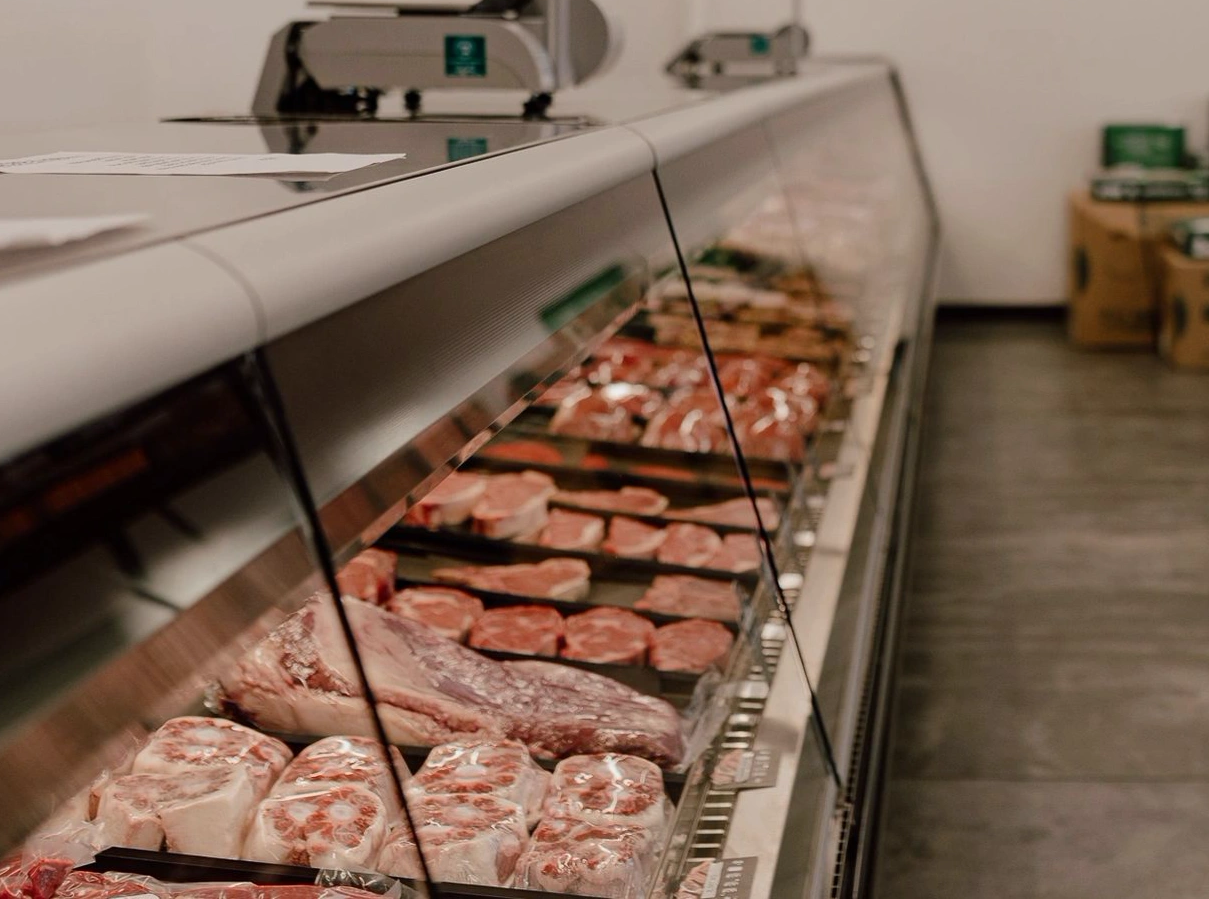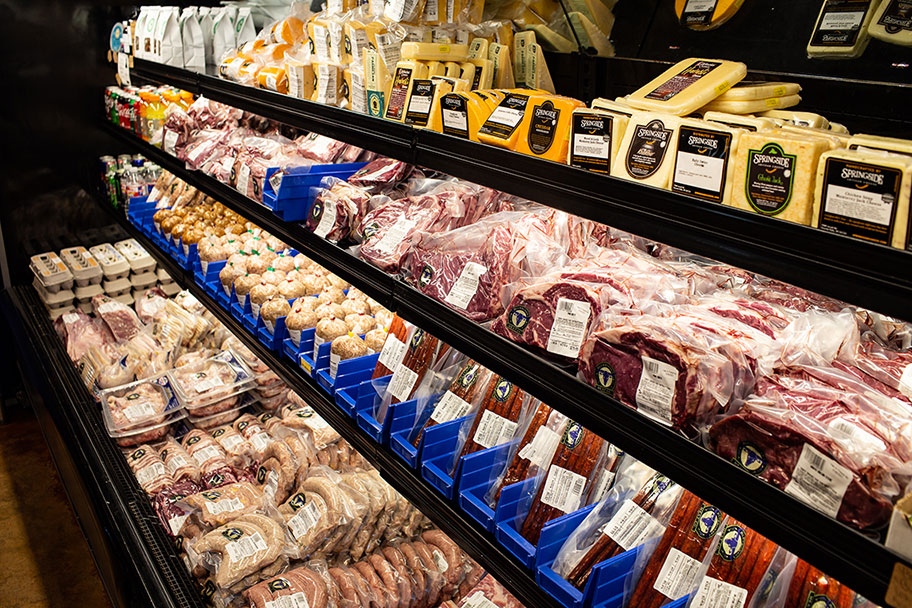Top Factors to Patronize Bagley Farms Meat Market Edwardsville IL for Premium Meats
Top Factors to Patronize Bagley Farms Meat Market Edwardsville IL for Premium Meats
Blog Article
Uncover the Art of the Butcher's Cut in a Modern Meat Market
In the ever-evolving landscape of modern meat markets, the butcher's cut has transcended its typical origins, merging age-old craftsmanship with modern methods. bagley farms meat market edwardsville il. Today's butchers are not simply processors of meat; they are knowledgeable craftsmens that emphasize sustainability and ethical sourcing. Their knowledge in selecting and preparing cuts customized to certain culinary needs supplies an unparalleled eating experience. What truly establishes the contemporary butcher apart is their ability to build a deeper link between consumers and the beginnings of their meat. How do these masters equilibrium custom with development, and what implications does this have for the future of meat intake?
Advancement of Butchery Techniques

The mid-20th century saw butchery techniques even more refined by clinical insights into muscle mass biology and meat aging, boosting both inflammation and preference. Innovations like vacuum packaging and refrigeration expanded item shelf-life, enabling butchers to diversify offerings and improve high quality control. This period likewise noted the increase of specific tools, such as band saws and meat slicers, which raised precision and performance in meat handling.
The 21st century has actually presented digital modern technology right into the butchery realm. Digital systems now help in tracking pet provenance and optimizing cuts to satisfy details client preferences. Furthermore, a rebirth in artisanal butchery has arised, mixing typical skills with contemporary understanding to deal with customers looking for moral and sustainable meat options. This development emphasizes a vibrant interaction between tradition and innovation, conference contemporary demands while maintaining the craft's heritage.

Understanding Meat Cuts

Recognizing the ins and outs of meat cuts is necessary for both butchers and customers looking for top quality and worth. For butchers, exact cuts reflect ability and regard for the craft, making certain minimal waste and ideal return.
The main groups of meat cuts consist of primitive, sub-primal, and retail cuts. Primitive cuts, such as the loin, rib, and chuck, are the huge sections initially divided from the carcass. Butchers then break these down further into sub-primal cuts, before ultimately creating retail cuts offered to consumers, like ribeye or tenderloin. Each phase needs cautious attention to physiological structure and muscle mass structure.
Comprehending muscle structure is vital; muscular tissues made use of more often by the pet have a tendency to be tougher and are best fit for slow cooking approaches, while less-used muscular tissues, like those located in the loin, are much more tender and official site suitable for barbecuing or roasting. Experience with these differences equips consumers to make informed choices, improving their culinary undertakings.
Picking Quality Meat
Choosing the right meat includes greater than simply picking a visually enticing piece from the display screen. The art of picking high quality meat calls for a discerning eye and knowledge of details characteristics that signify quality and excellence. First of all, focus on the color; beef must have an intense, cherry-red hue, while lamb should display a soft pink tone, and pork a pale pink. This shows the meat is fresh and hasn't been subjected to oxygen for also long.
Secondly, think about the marbling, which refers to the white streaks of fat within the muscular tissue. Correct marbling is an essential sign of tenderness and taste, as it thaws throughout food preparation, enhancing the meat's juiciness. Keep in mind, greater marbling frequently correlates with superior high quality cuts, such as USDA Prime.
Structure is one more crucial aspect; meat must feel solid to the touch, not slimy or overly soft. Additionally, bear in mind the aroma. Fresh meat needs to have a tidy, neutral scent, totally free from any sour or repulsive odors.
Coupling Cuts With Cooking Techniques
Effectively combining cuts of meat with the suitable cooking approaches is necessary for achieving optimum taste and appearance. These methods improve the meat's all-natural tastes and guarantee a juicy surface.
Alternatively, harder cuts like brisket and chuck roast are abundant in collagen, which breaks down right into jelly when prepared slowly. These cuts are ideal for braising or slow-moving roasting, permitting the meat to soften gradually and develop deep, intricate tastes. In a similar way, cuts such as brief ribs and pork shoulder get on well about his with slow-cooking methods, where extended cooking times change their durable appearances into delicious dishes.
Lamb shanks and oxtail, which call for prolonged food preparation to tenderize, are ideal prospects for cooking or sluggish simmering. These techniques coax out rich, passionate tastes while preserving wetness. By understanding the distinct qualities of each cut, cooks and home chefs alike can raise their culinary productions, ensuring each recipe is both pleasing and remarkable.
The Butcher's Duty Today
Browsing the evolving landscape of the modern-day meat market, the butcher's role today extends beyond simple preparation of cuts. Contemporary butchers are cooking artisans, instructors, and advocates for lasting techniques. They link the void in between the farm and the fork by guaranteeing ethical sourcing, comprehending animal husbandry, and prioritizing transparency in the supply chain. This change shows the expanding customer need for high quality over quantity, where provenance and animal welfare are critical.
Along with crafting precise cuts, butchers now involve directly with consumers, offering cooking recommendations and tailoring selections to fit individual demands and preferences. Their proficiency in meat aging, marbling, and taste accounts encourages customers to make informed decisions, boosting their cooking experiences. This individualized service exemplifies the butcher's advancing duty as a relied on advisor in the kitchen area.
Moreover, butchers are essential in decreasing waste, making use of whole pets to create diverse products such as sausages and supplies - bagley farms meat market edwardsville il. This thorough strategy not only appreciates the animal but additionally aligns with contemporary sustainability goals. In this way, the contemporary butcher personifies both practice and advancement, adjusting to an ever-changing market while preserving the creativity and stability of their craft

Final Thought
Proficiency in understanding diverse meat cuts and see here now top quality indicators equips butchers to provide informed recommendations, aligning certain cuts with ideal food preparation approaches. By honoring historic practices while embracing modern needs, the butcher's duty stays important in today's innovative meat market.
Report this page